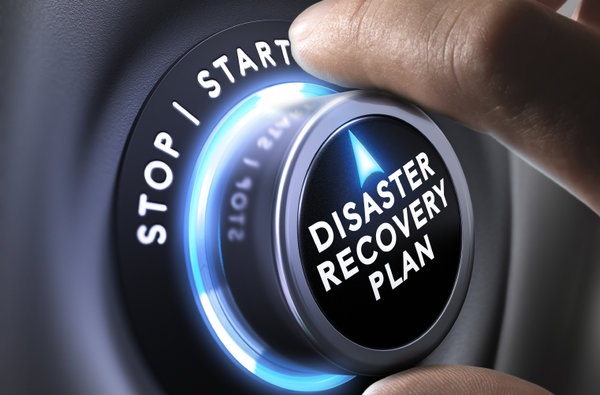
Disaster recovery for your network is one of those things that you need to prepare for. As common wisdom goes, there are only two kinds of networks: those that have failed and those that will fail. You have to have a disaster recovery plan in place because some day you will need it.
Data has become critical to every business, so when a natural disaster or some other failure strikes and the data stops flowing, your business will grind to a halt.
Here are some interesting statistics about network disasters:
- Over a two-year period, 50 percent of businesses experienced an unforeseen disruption and 81 percent had to close operations for longer than 24 hours.
- 80 percent of businesses that experience a disaster go out of business within three years while 40 percent of businesses that suffer a critical IT failure go out of business in one year.
- After a fire, 44 percent of enterprises fail to come back online, and 33 percent fail beyond three years.
- Analyst research shows that 90 percent of small businesses (less than 100 employees) spend less than 8 hours on continuity planning and disaster recovery.
Develop a Disaster Recovery Plan
The nature of a disaster can be almost anything, so trying to prepare for specific scenarios is impossible. You could suffer fire, flood, disastrous power outages, a hacker attack, critical equipment failure, or some other kind of disruptive problem. Rather than trying to plan for specific disaster scenarios, it’s best to have ongoing network backup and recovery protocols that will serve you no matter what the disaster. Your primary objective is to keep business-critical data safe and bring it back online as soon as possible.Your first step is to make a detailed assessment of your enterprise infrastructure. You need to perform a risk assessment and a business impact analysis to identify IT elements that are vital to business operations. Then you will need to develop recovery time objectives and establish recovery points (e.g. how frequently do you need to have secure data backups?). Once you have inventoried the essential components to your operation, you need to develop a recovery procedure in the event of a disaster.
Things to cover in the plan include:
- People – Identify managers and personnel who have responsibility for business-critical systems and make sure they are trained for disaster recovery. They should have well-defined procedures for system backup and restoration. Also make sure you train a primary person and a backup person who can step in as needed. Also be sure that all the information you need for a successful recovery is completely documented, including passwords and other details people tend to keep secured or in their head.
- Physical Locations – If there is a fire or a flood, your primary business location may become unusable. Depending on your business, you may want to have a backup location in mind, such as a warehouse or secondary office. You should have a backup location in mind, or have a backup strategy to set up virtual operations and telecommuting if it suits your operational model.
- Technology – As part of your recovery plan, make sure you have a backup facility capable of sustaining baseline computer operations. Your fallback location needs to have the necessary power, air conditioning, and infrastructure to handle your temporary computer network. One way to alleviate many of these challenges is to use cloud resources. If you can offload business-critical computing and data storage to the cloud then you will only need a less robust IT infrastructure to access the cloud. Another great suggestion would be to test your DR technology at least twice a year to ensure your systems will work properly.
- Data Backup – Business-critical data is your most important and irreplaceable asset. Be sure that you have all your data backed up safely and securely. For example, locking tape backups in a fireproof safe is fine if the safe is elsewhere. Again, cloud backup and recovery procedures are ideal for disaster recovery, and to be even more secure, consider keeping a mirror backup somewhere off-site. Also be sure that you are backing up data regularly.
- Suppliers – As part of your disaster recovery plan, identify alternate suppliers who can provide critical systems such as hardware, power, networking, and replacement components. Work with these suppliers in advance to make sure they have the components you might need available, or accessible in a short period of time.
Who You Gonna Call?
Developing and maintaining a disaster recovery plan is complicated, and you should not leave it to chance. If you don’t want to commit the time and resources in-house to manage disaster recovery, consider outsourcing it. There are specialty services, such as our TotalCare Backup and Recovery service, which are designed specifically to support small- to mid-sized businesses that lack the resources to manage disaster recovery effectively.You can hire a team of IT experts who already understand the requirements of disaster recovery and can help you develop a disaster recovery plan and protocols in a fraction of the time it would take to do it in-house. In addition, by outsourcing your disaster recovery, you get immediate access to additional resources such as cloud data storage, off-site backup systems, and equipment that can be configured for hot swaps to shorten recovery time. Plus, it means your internal IT team can stay focused on more profitable projects rather than worrying about what might happen.
Disaster recovery is very much like insurance, and you don’t want to be underinsured when disaster hits. Be sure you have adequate protection in place, including a team of experts who appreciate your business, what is critical to your operations, and how to get your business back online in the shortest possible time.
What other steps have you taken with your Disaster Recovery strategy?







